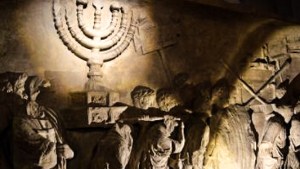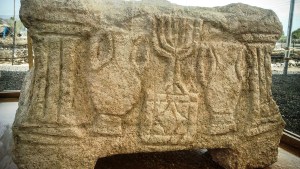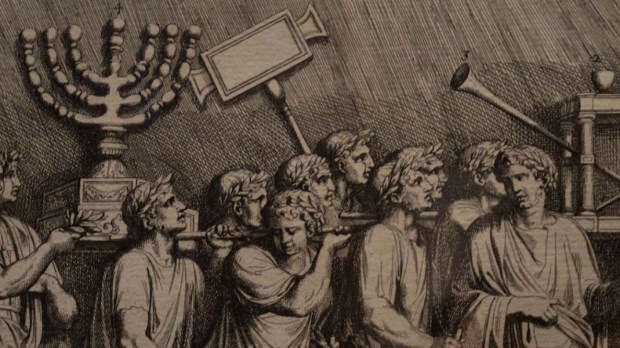Lenten Campaign 2025
This content is free of charge, as are all our articles.
Support us with a donation that is tax-deductible and enable us to continue to reach millions of readers.
When one thinks about classic Greek and Roman architecture and sculpture, white marble comes immediately to mind. But, in fact, classical antiquity was far more colorful than we think: even the façade of the Parthenon was, in its day, brightly painted.

Read more:
Vatican and Jewish museum’s joint exhibition brings 2,000 years of art, history to Rome
The famous Arch of Titus was no exception. Built by the Roman Emperor Domitian after the death of his brother and predecessor, Titus, the Arch commemorates the victories of Titus during the First Jewish–Roman War (66–73), including the Roman siege of Jerusalem and the infamous destruction of the Second Jewish Temple in the year 70. That is to say, that the Arch of Titus is one of the very few artworks in history in which one can indeed see the liturgical objects of the Second Temple, including the Temple Menorah.

Read more:
Archaeologists keep making discoveries in Mary Magdalene’s hometown
In 2012, researchers from Yeshiva University, the Virginia Museum of Fine Arts, and the Institute for the Visualization of History gathered to reconstruct the famed Arch of Titus’ Menorah Panel in discernible colors, which might have been those in which it was originally painted. As explained in Realm of History,
The process entailed a detailed 3D scanning of the Menorah Panel, which allowed them to virtually recreate segments of the relief. The team then proceeded on to scan the panel for remnants of color. Interestingly enough, the researchers did find traces of yellowish tint on the menorah itself, which rather matched with ancient Jewish historian Josephus’ description of how the object appeared golden during the Roman victory parade.
You can see the video explaining the process here:

